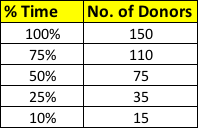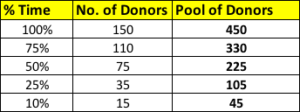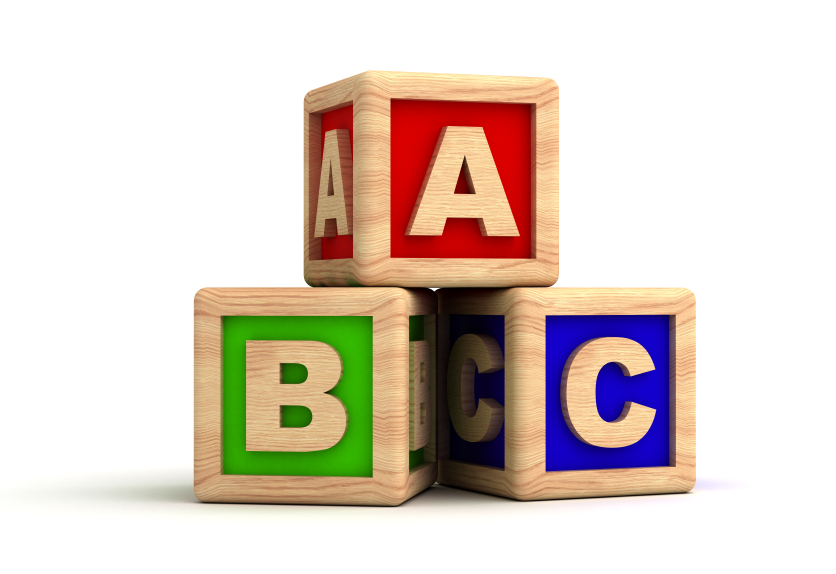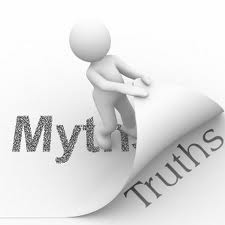A Step by Step Guide to Success
As a regular reader of the Passionate Giving Blog, you’re among thousands of your colleagues around the world who are trying to do major gifts just a little bit better every day. Richard and I get notes, emails and letters every week asking us to answer questions. One that comes up almost every week is from fundraising professionals who work for small organizations.
Most of these small organizations don’t have a major gift fundraiser. So what happens is that one person or a few people do “everything” in that organization, and major gifts becomes an afterthought.
As you know, every non-profit (large or small) needs a major gift program. You will not survive without one. If you are working at a small non-profit, you might be saying, “I know we need a major gift program, but with everything I’m doing there is no time.”
Richard and I get this. But at Veritus, we like to speak the truth and get real with you. I’m going to give you a step-by-step approach for how you can do major gifts no matter how small you are, or even if you only have one donor that you would consider a major donor.
You ready? Here we go:
- Commit to yourself and leadership that major gifts will be a priority in the next year —The reason you say you don’t have time for major gifts work is simply because, in your organization, major gifts is not a priority. If it were, you would make the time. (Tweet it!) Very simple, but we’re talking truth to you here, so accept it with open hands and embrace it as a gift. When I hear fundraisers say they don’t have the time to do major gifts, it’s not because you don’t have the time. It’s that you don’t value major gifts work. If you value something, you make time for it.
- Decide what percentage of your time (or someone on your small team) will devote to major gifts — For example, let’s say you can devote 25% of one person’s time to major gifts. That would be a good start. But even if it’s only 10%, you can still be successful at major gifts.
- Figure out how many donors you can work with — After you decide the percentage of time you can work on major gifts, determine how many donors you can successfully cultivate and steward effectively. Use the chart below as a guide:

- Identify your donor pool — Let’s say you can devote 25% of your time. That means you can work with 35 donors effectively. To get to 35, you will need 105 donors who meet your major gift metric. (Remember, only about 1/3 of donors that meet your metric will want a deeper relationship with you.) Your cutoff might be $1,000 in cumulative giving in the last 12 months – it would be higher or lower depending on how large of an organization you are. See the chart below that will guide you to how many donors you need to get to your desired caseload.

- Qualify the donors from the pool — You need to go through a consistent process for qualifying donors that will eventually end up in your portfolio. You can download our white paper here to give you the step-by-step instructions on how to do this. But it’s critical that you do it – otherwise you’ll be chasing donors that don’t want to relate to you, you’ll get frustrated, and you’ll end up NOT doing major gifts.
- Tier your portfolio A-C — So once you have your 35 qualified donors, tier them A-C levels. In this scenario, about 7 donors will be A, 10 will be B, and 18 will be C level. It might not be exact for you, but you get the idea. This will help you correctly focus the precious 25% of your time you have for this work, so you’ll spend time on the donors that have more ability to give higher gifts.
- Attach revenue goals and a strategic plan to every donor — This is absolutely essential if you are going to “stick with” major gifts. Setting goals means you will have something to attain to for every donor. Without a goal, you’ll get lost in the woods. Believe me. Richard and I see this all the time, you get off the path and now you get lost. Set a goal. Then, you create a 12-month communication strategy/plan that has at least one touchpoint a month for those donors. Touchpoints include thanking, reporting back impact, visiting the donor face to face, soliciting the donor and giving the donor a great experience. This is your roadmap on how you are going to attain the goal. (We have a free White Paper on this subject, too.)
- Accountability — Assign someone to hold you accountable to 1) keeping steady the percentage of time you allocated toward major gift work; and 2) staying on track with your strategic plan and revenue goals. You will blow it, if you don’t have this person in your life. Not only could you get lost in the woods, we may never find you again. Please have accountability set up for yourself.
If you follow these steps, you’ll have a successful major gift program. There is no doubt. But even better, you’ll start building incredible relationships with donors who love your mission and will find great joy in giving to your mission. Now, go out there and commit to doing this. We are here to support you.
Jeff







0 Comments